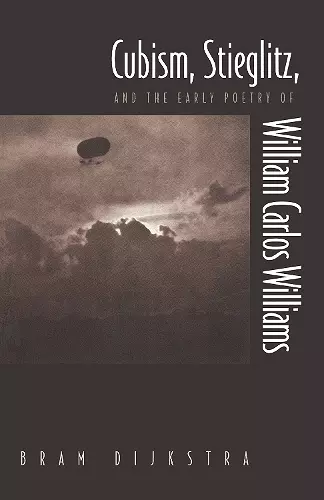Cubism, Stieglitz, and the Early Poetry of William Carlos Williams
Format:Paperback
Publisher:Princeton University Press
Published:1st Jul '92
Should be back in stock very soon

Georgia O'Keeffe's reaction when I told her in 1973 that I was starting a book on Stieglitz went from 'What for? Nobody who knew him could write about him' to 'Go ahead' because it would be fun for her to see what I had to say, and finally to her powerful instruction: 'Read Bram Dijkstra's [Cubism, Stieglitz, and the Early Poetry of William Carlos Williams]; it's the only book about Stieglitz worth reading.' I read it and agreed. -- Sue Davidson Lowe, author of "Stieglitz: A Memoir/Biography"
Previous studies of William Carlos Williams have tended to look only for the literary echoes in his verse. This title catches the excitement of this period of revolutionary art, reveals the interactions between writers and painters, and shows in particular the specific and general impact this world had on Williams' early writings.Previous studies of William Carlos Williams have tended to look only for the literary echoes in his verse. According to Bram Dijkstra, the new movements in the visual arts during the 1920s affected Williams's work as much as, if not more than, the new writing of the period. Dijkstra catches the excitement of this period of revolutionary art, reveals the interactions between writers and painters, and shows in particular the specific and general impact this world had on Williams's early writings.
"Dijkstra has demonstrated beyond any doubt that Williams was enormously influenced by experimentation in the visual arts and that he attempted to emulate the Stieglitz group in focusing on the object itself, delineating it as precisely as possible and letting it represent the moment of perception without intruding personal comment."--Comparative Literature
ISBN: 9780691013459
Dimensions: unknown
Weight: 312g
256 pages